Summary
Have your weight on the heel side
Having your weight on the heel side makes it easier to flip the board, as your flick gives more horizontal force than when your weight is on the board.
Have your weight on the front foot
Also, have your weight on the front foot so that the arc your front foot draws catches the nose.
Twist your front foot inward
Either have your front foot perpendicular to the board or twist it inward during the flick to block the force of the flick from escaping upward. Make use of the Motion Echo Player to analyze your movements.
Simulation
Hit the icon in the middle to start a 3D animation.
Impact of the toe to heel weight distribution
Human foot structure and body axis
First, let's see how the weight distribution affects the flip. Due to the structure of the human foot, the weight is placed on the ball of the foot when squatting. In a Heelflip, the ball of the foot moves toward the toe side further than usual. So, the center of gravity also tends to shift toward the toe side, tilting the body axis.
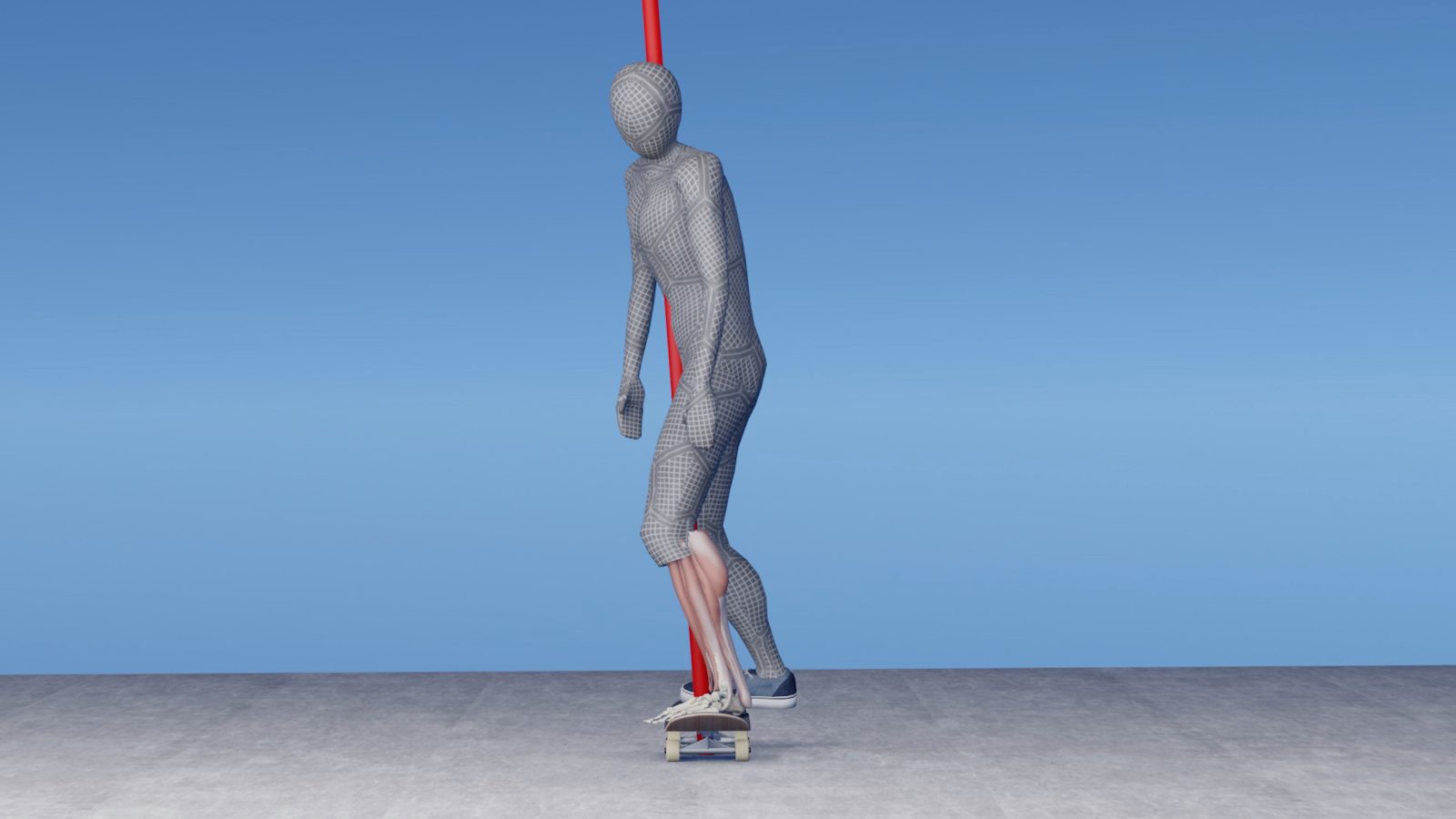
Main reason your board geos behind you
What happens when you pop the board in this state? The popping force applies in the opposite direction of the center of gravity: diagonally backward. By pushing against the ground, the body is pushed back in reaction towards the toe side, further moving away from the board. Under this condition, it's impossible to land back on the board, no matter how hard you try.
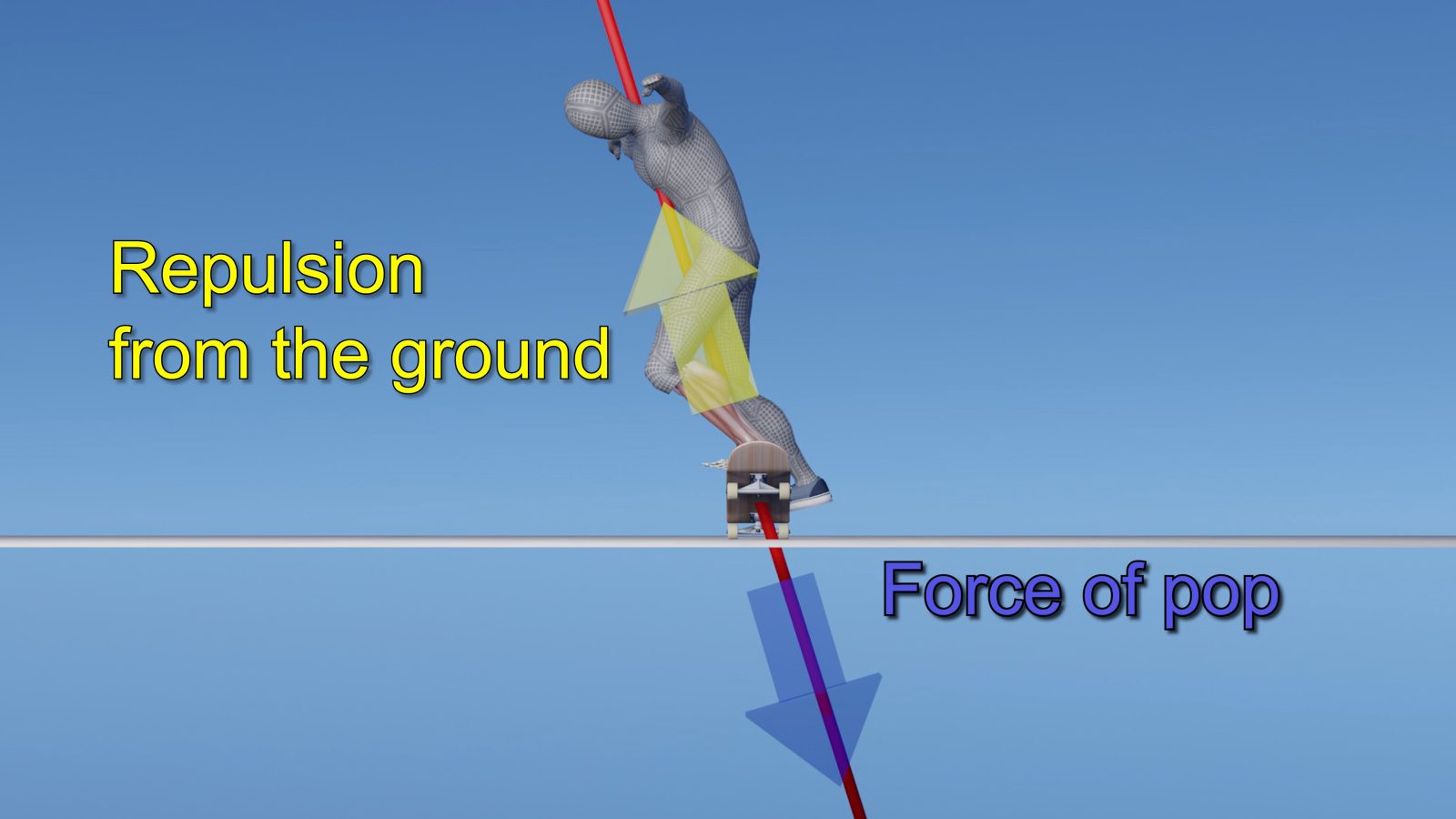
Center of gravity and the airtime
The position of the center of gravity also affects how long you can stay in the air. To secure the airtime, you must receive an adequate "vertical repulsion" from the ground. Applying force diagonally backward causes the force to disperse horizontally, weakening the vertical force and shortening the air time.
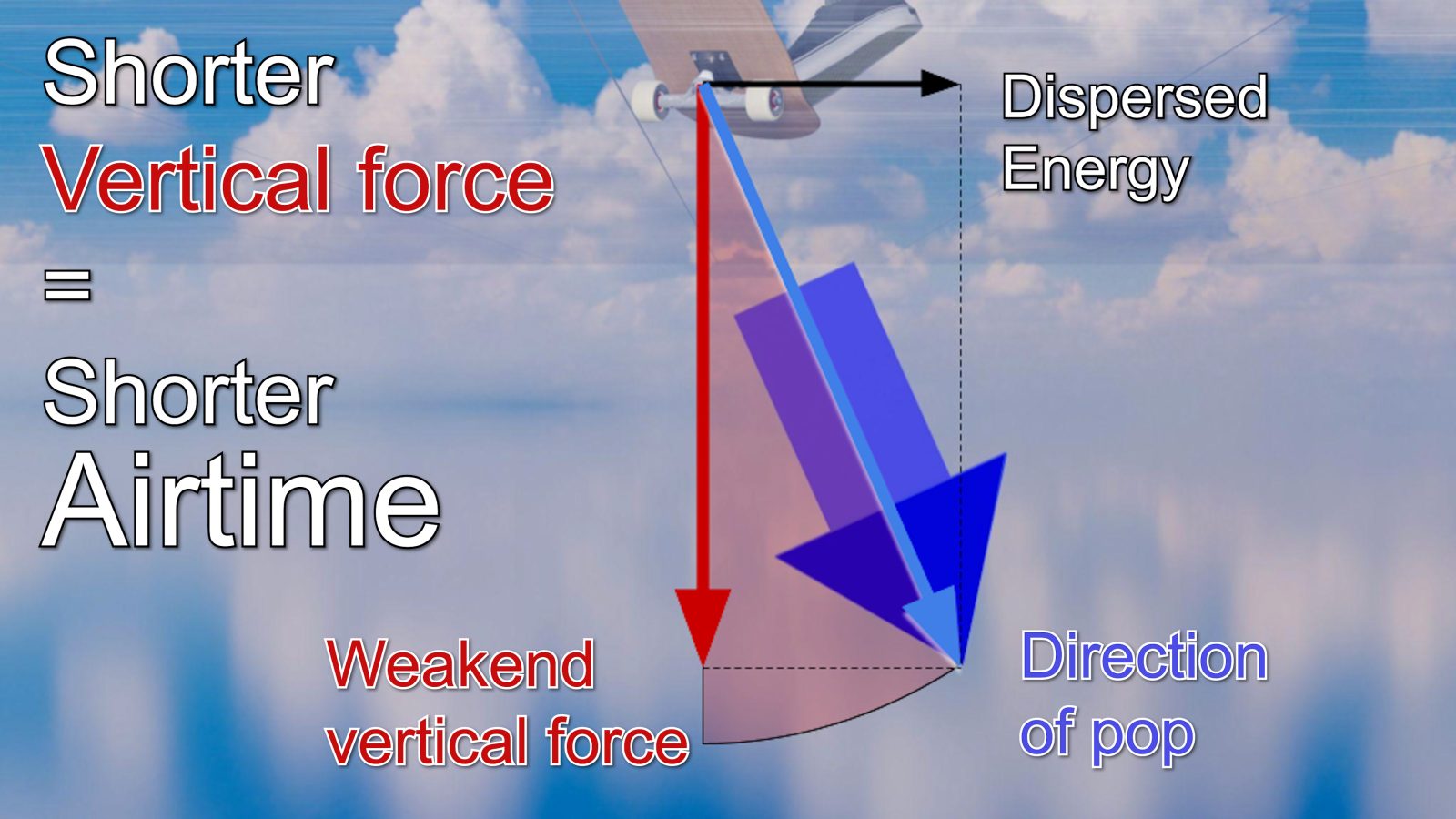
Fixing the toe to heel weight distribution
Commonly missed point
Of course, keeping the body's center of gravity directly above the board is important to solve this problem. But, it is even more essential to understand that you can keep the body's center of gravity above the board without your hip above it.
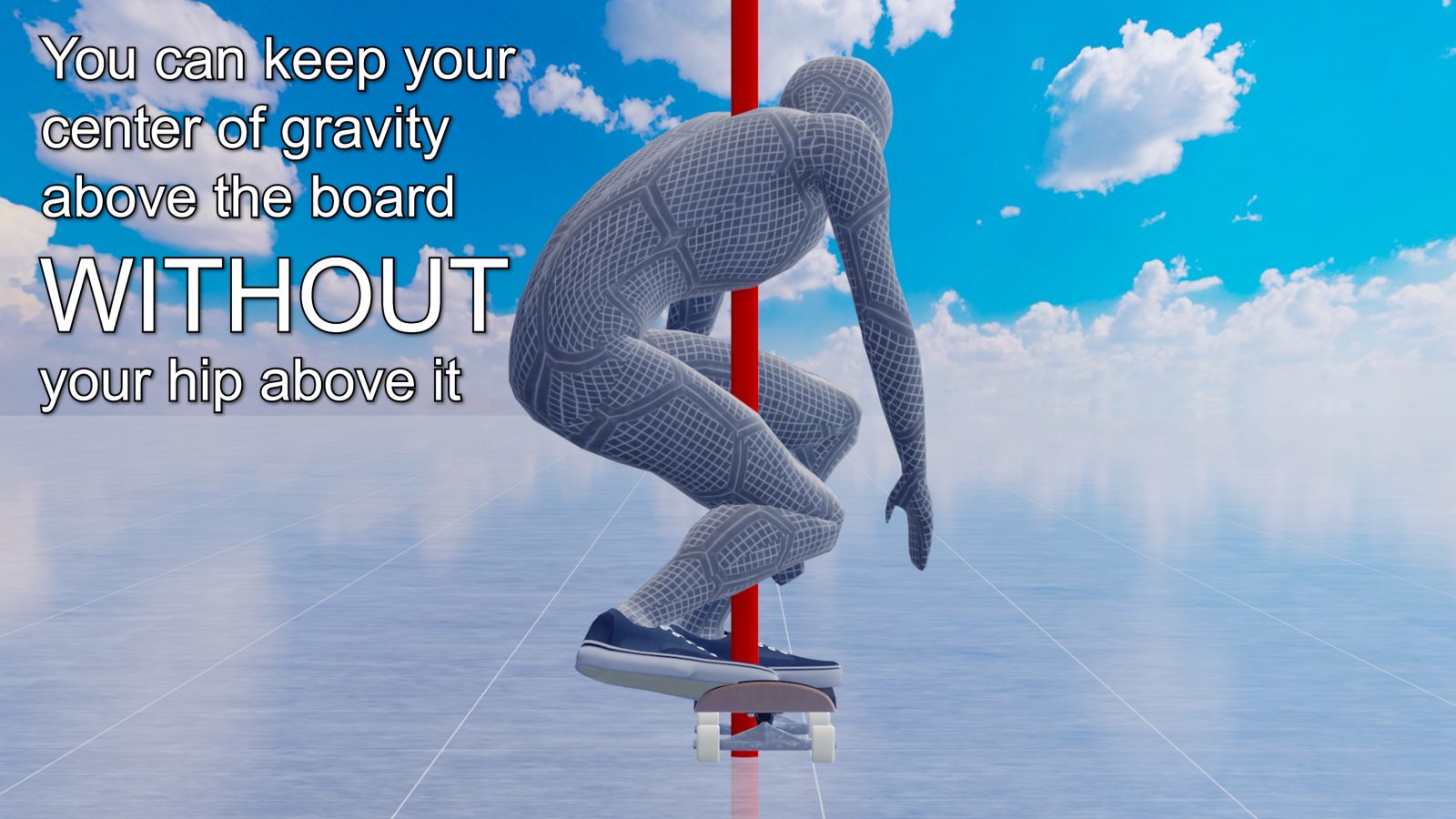
How to keep the body weight above the board
For example, when squatting normally, you would lower your body straight down. But when you pull your hip back, the center of gravity moves towards the heel side. You can pull the center of gravity back on the board by bending your chest and extending your arms forward. With the center of gravity above it, you can efficiently receive the vertical repulsion from the ground when popping, and it allows you to keep the board under your body throughout the trick.
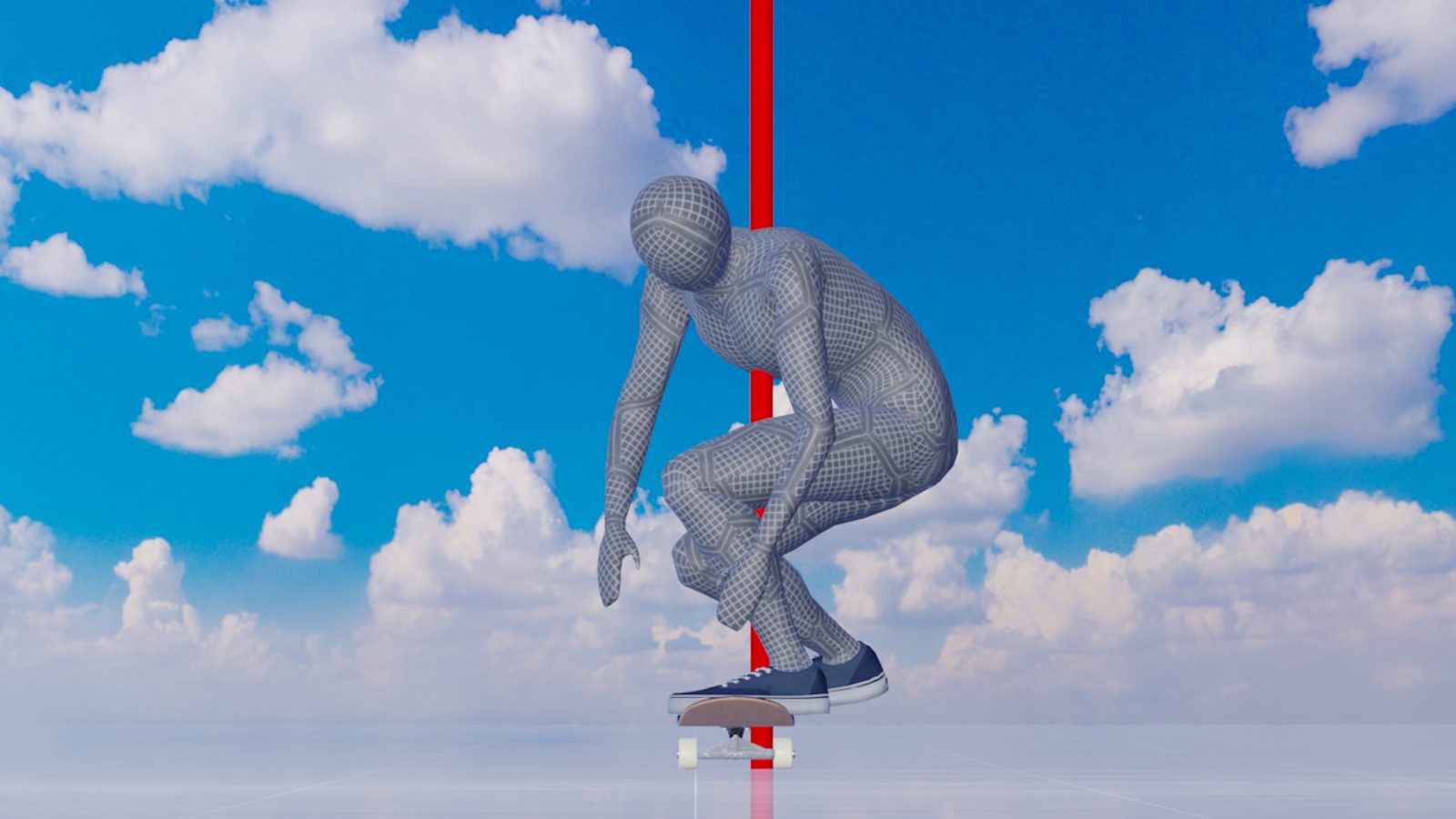
Another benefit of having the weight on the heel side
It helps you flip your board faster
While it is a clearly unnatural posture compared to the normal squatting position, squatting by pulling the hip gives you another benefit: it makes it easier to flip the board from a physics perspective. To understand this, let's compare what happens to the board when flicking the same spot with the hip directly above the board and on the heel side.
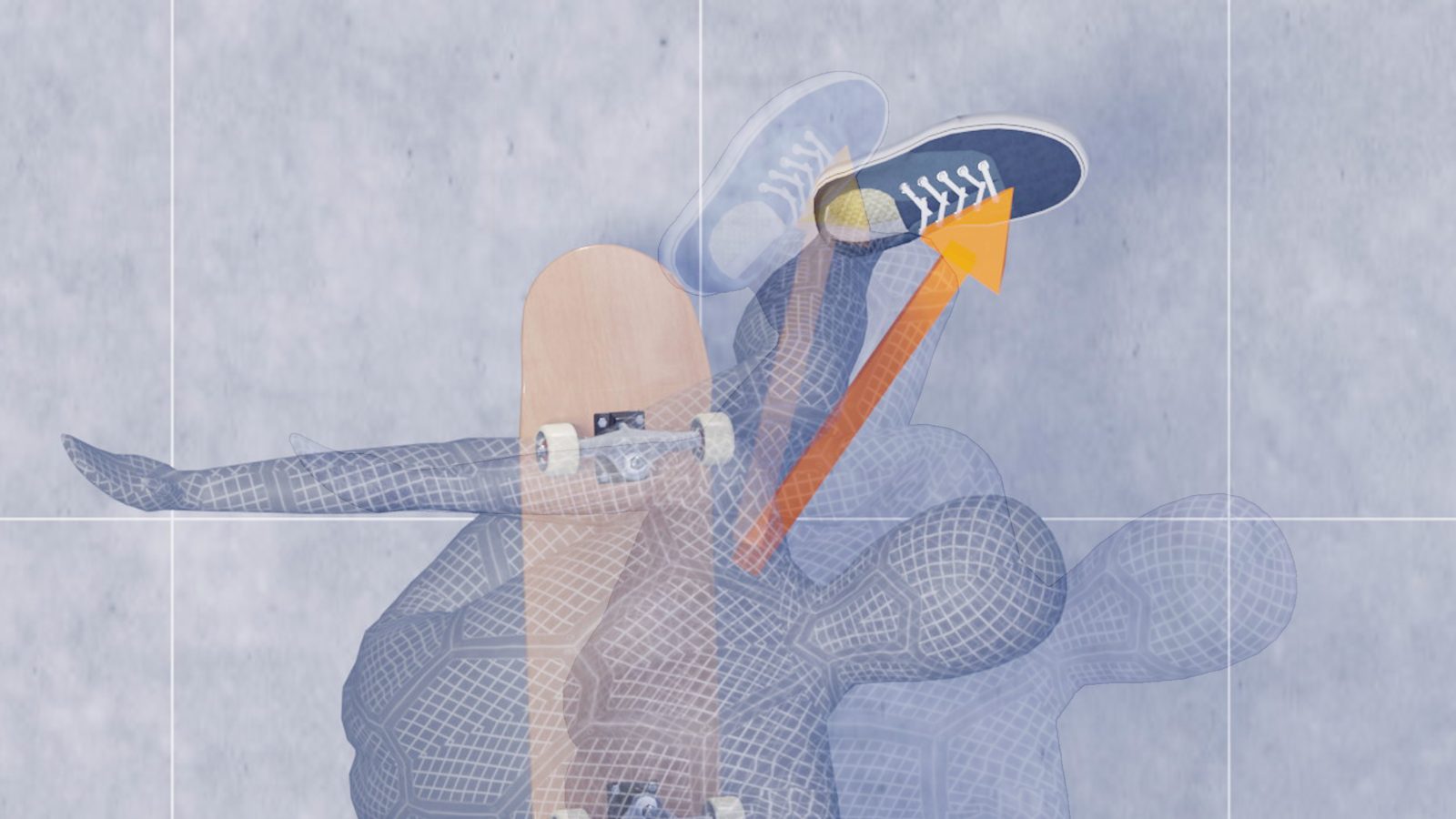
What happnes when your hip is above the board
When the hip is above the board, the flick gets closer to parallel to the direction of travel. If you flick this way, the front foot pushes down the nose and slams the board against the ground.
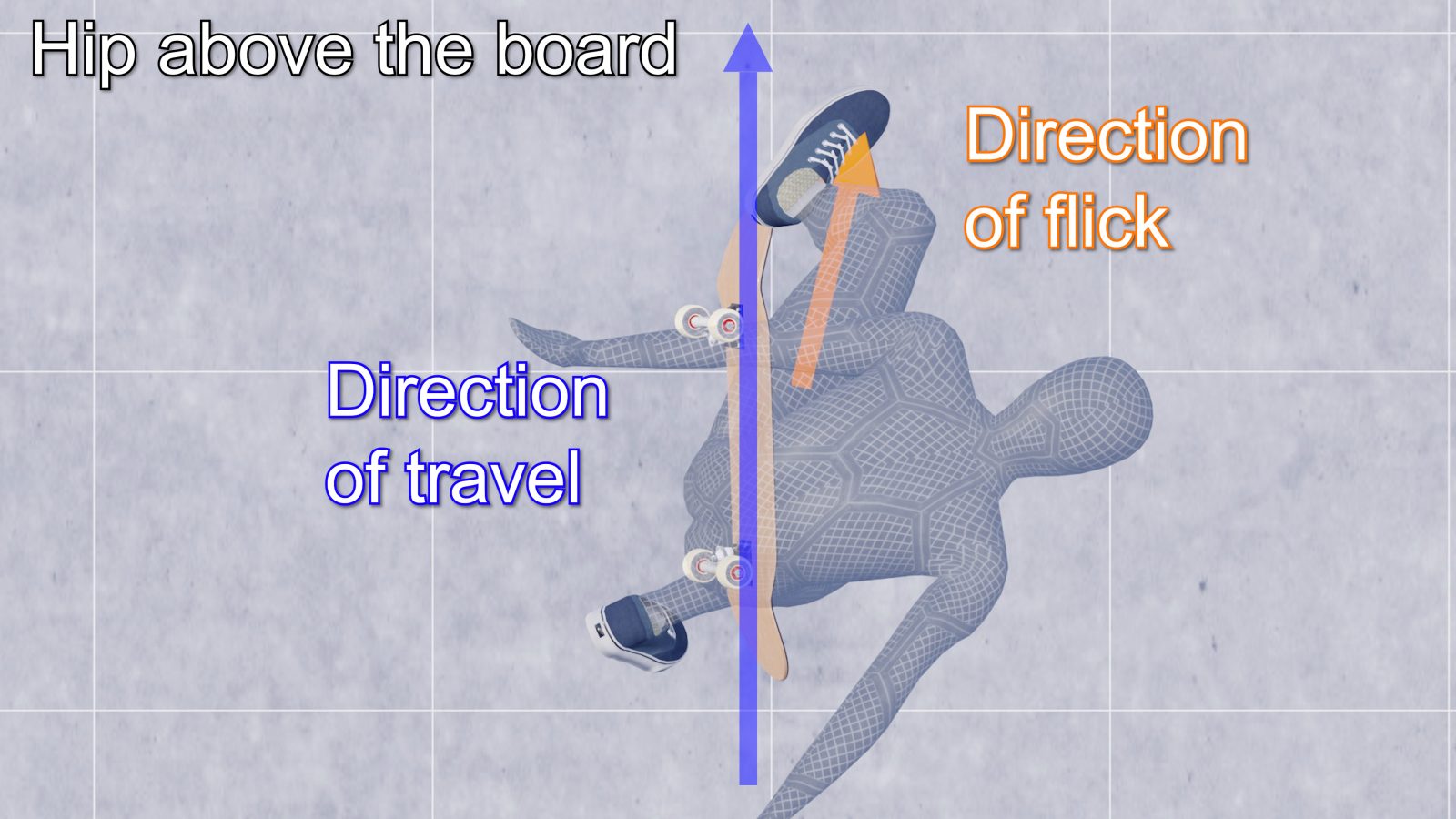
What happnes when your hip is on the heel side
But when you flick the same spot with your hip on the heel side, a greater horizontal force applies, making it easier to flip the board. In other words, it is important to have your hip on the heel side to flip the board more efficiently.
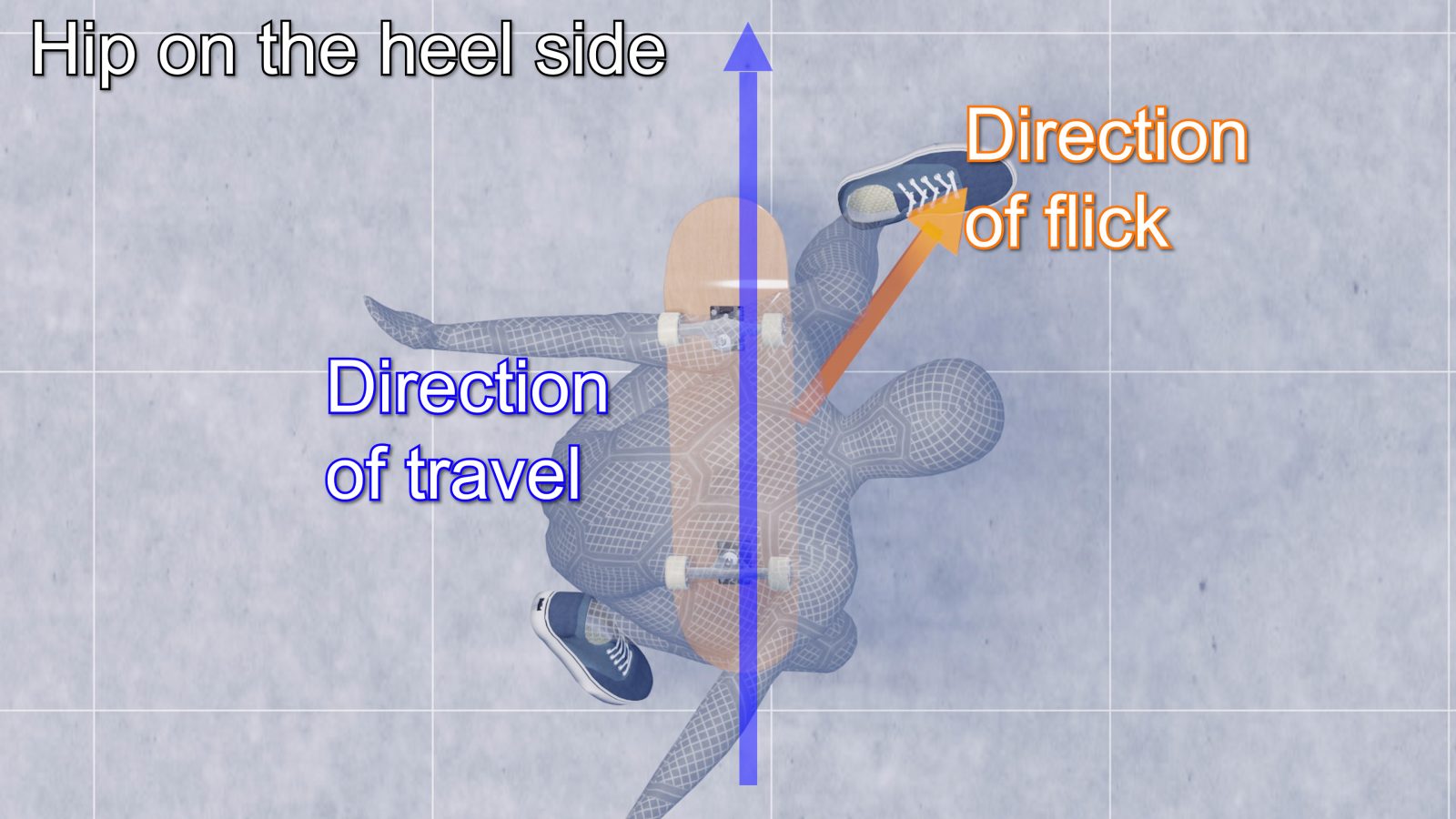
Lift your weight vertically
Please note you won't be able to land back on your board if you bring your weight forward with the flicking motion. Lift your weight vertically, and pay attention to how you flick, which I'll explain in the latter part of this video.
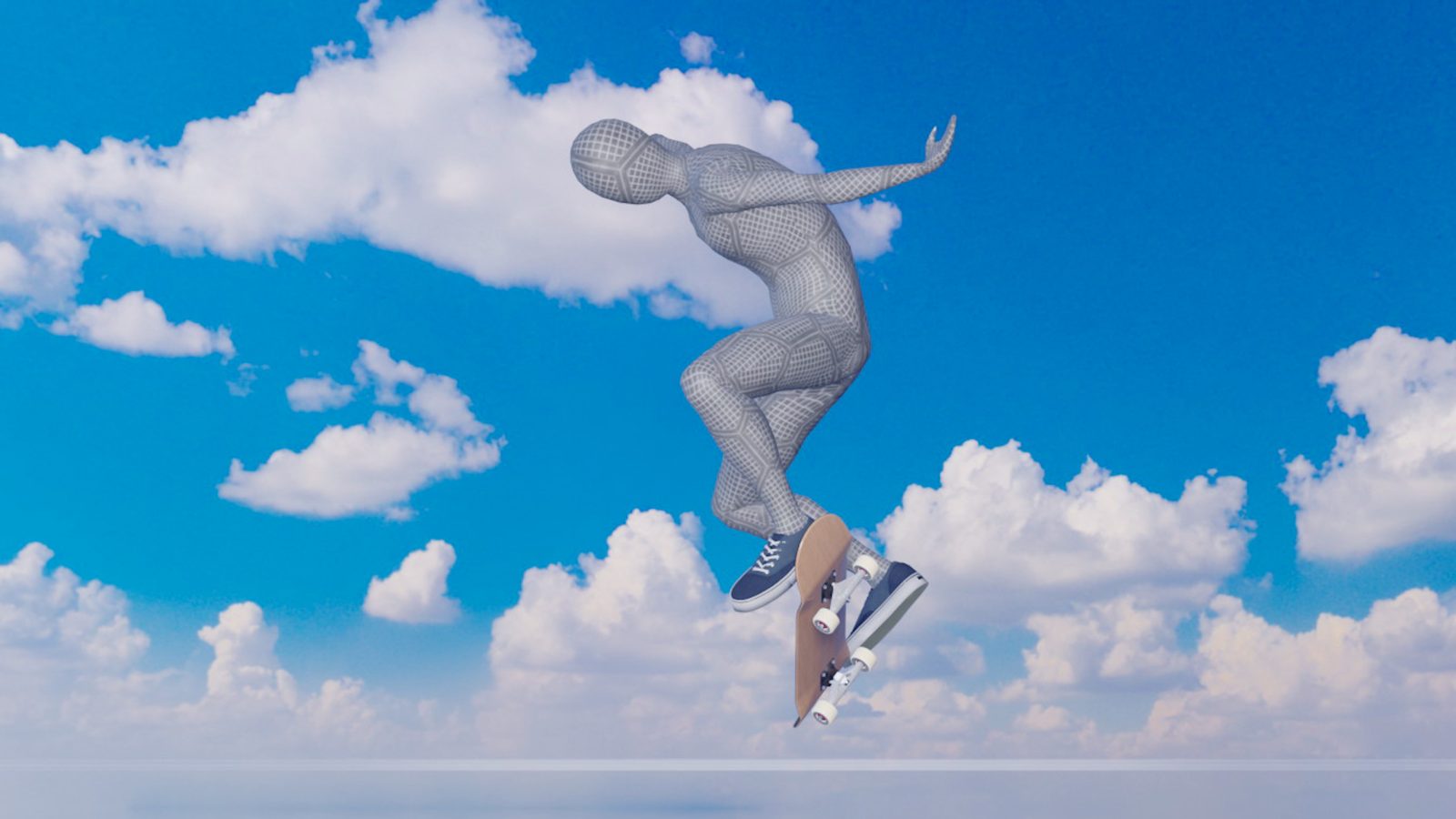
Front to rear weight distribuion
Summary of the Arc theory
In addition to the toe-to-heel weight distribution, the front-to-rear weight distribution is also important. As explained in the previous video, you may place your weight on your back foot as you pop the tail. But if too much weight is placed on the back foot, the arc drawn by the front foot will be away from the board, and the power of the flick will not be transferred to the board.

Take a wider stance
This symptom is indicated by your toe cutting through the air without flipping your board. If that applies to you, taking a wider stance than usual might improve the problem. By placing the front foot farther toward the nose, the body weight on your back foot will get closer to the nose. Doing this allows the force of the body's extension to hold down the nose, making it easier for the flicking arc to catch it.
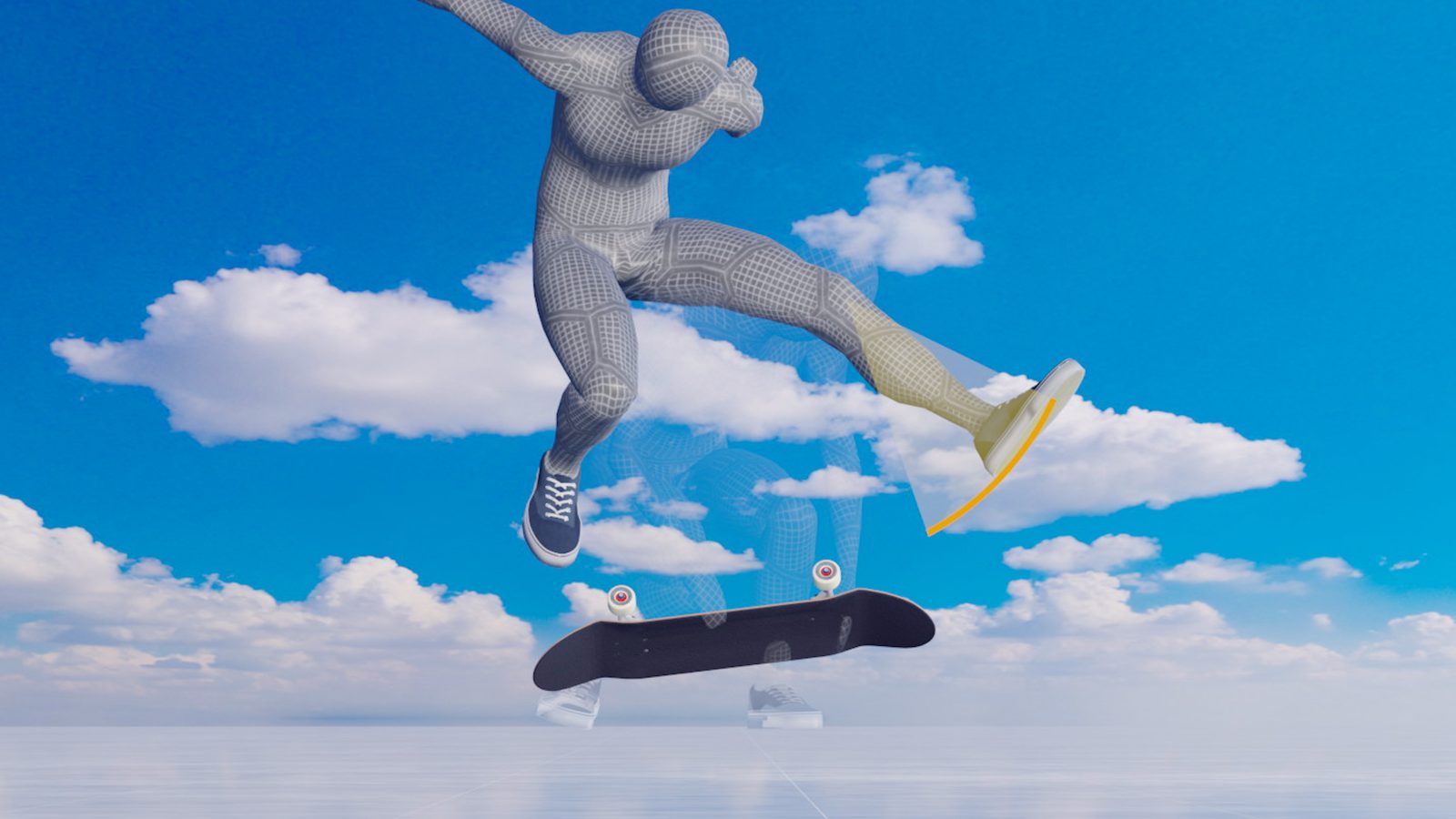
Wider stance = Stronger pull
Another benefit of a wider stance is that as the front foot moves, the center of gravity also moves closer to the nose, allowing your back foot to pop the tail while pulling it harder.
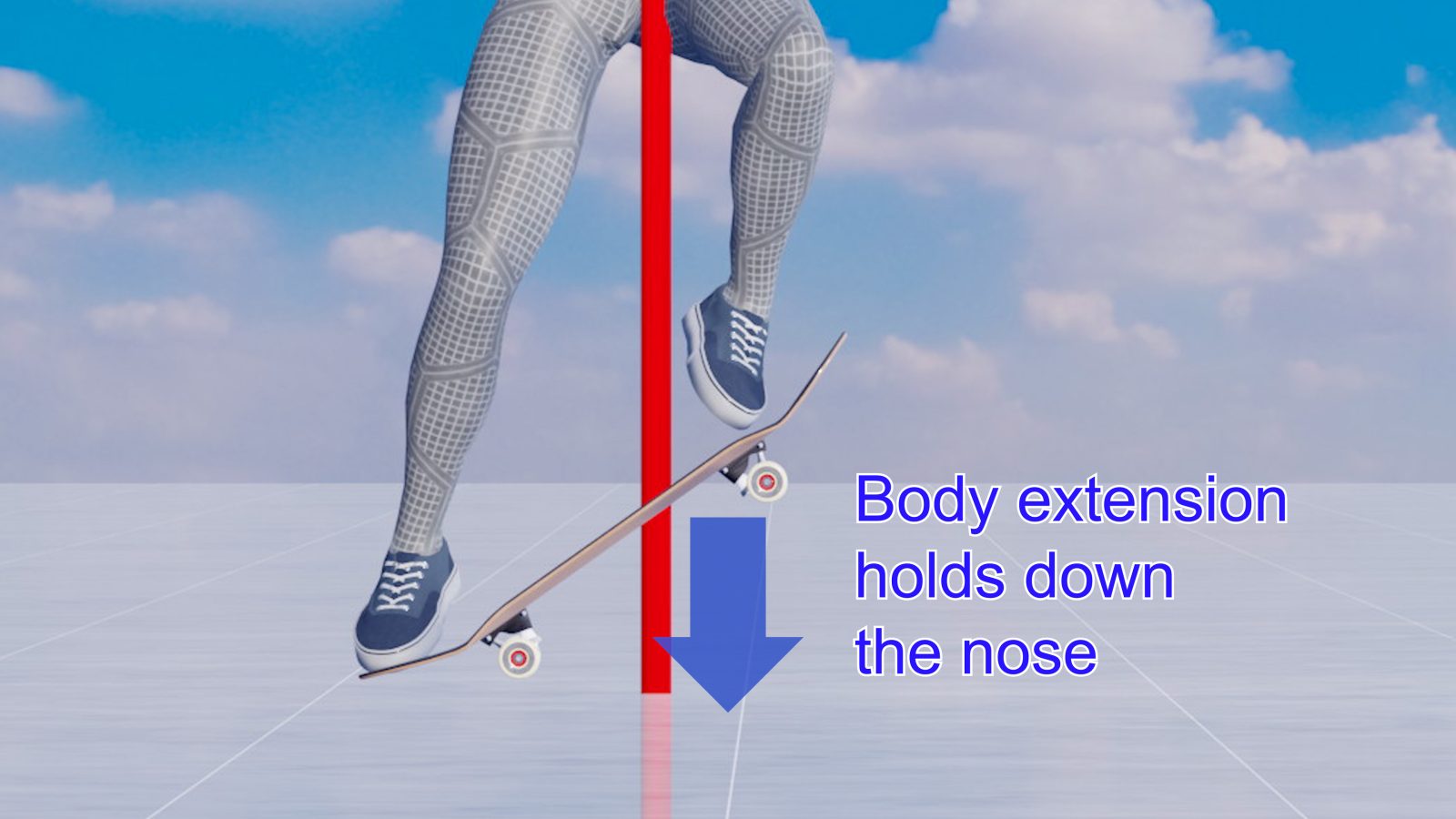
Benefits of pulling the tail
By pulling the tail, the nose pushes the front foot back harder. The front ankle rolls as the nose pushes it back, causing more friction and allowing the force of the flick to transfer more effectively to the board.
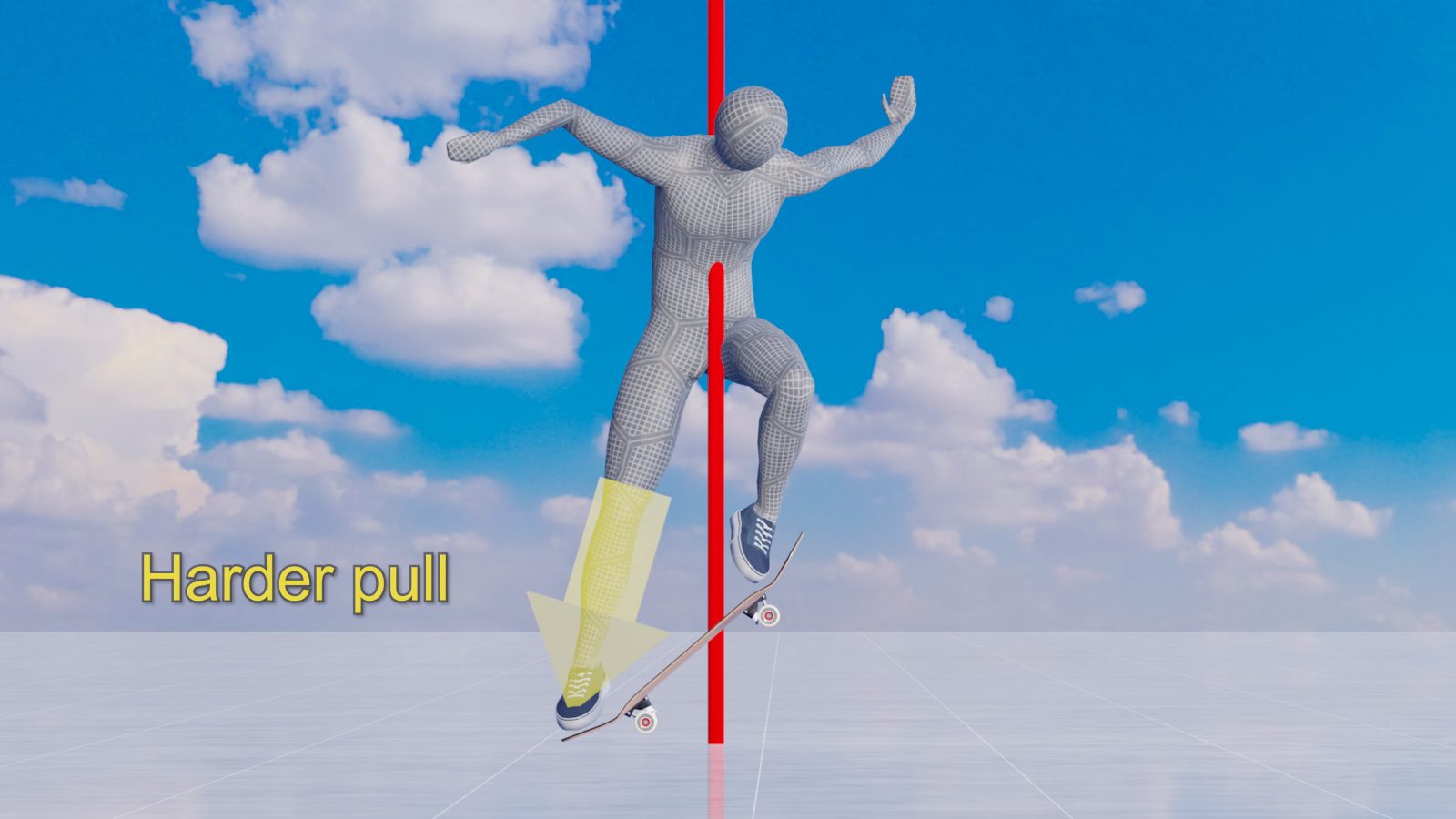
How to flick
Even if you follow the tips so far, you might not be able to transfer energy to the board, depending on how you flick. As mentioned before, there are two things that are important in a Heelflip: "having your weight on the heelside" and "keeping the arc that the front foot draws low." The trouble is once you start swinging the lower leg, it continues to rise due to inertia, increasing the chance of missing the board.
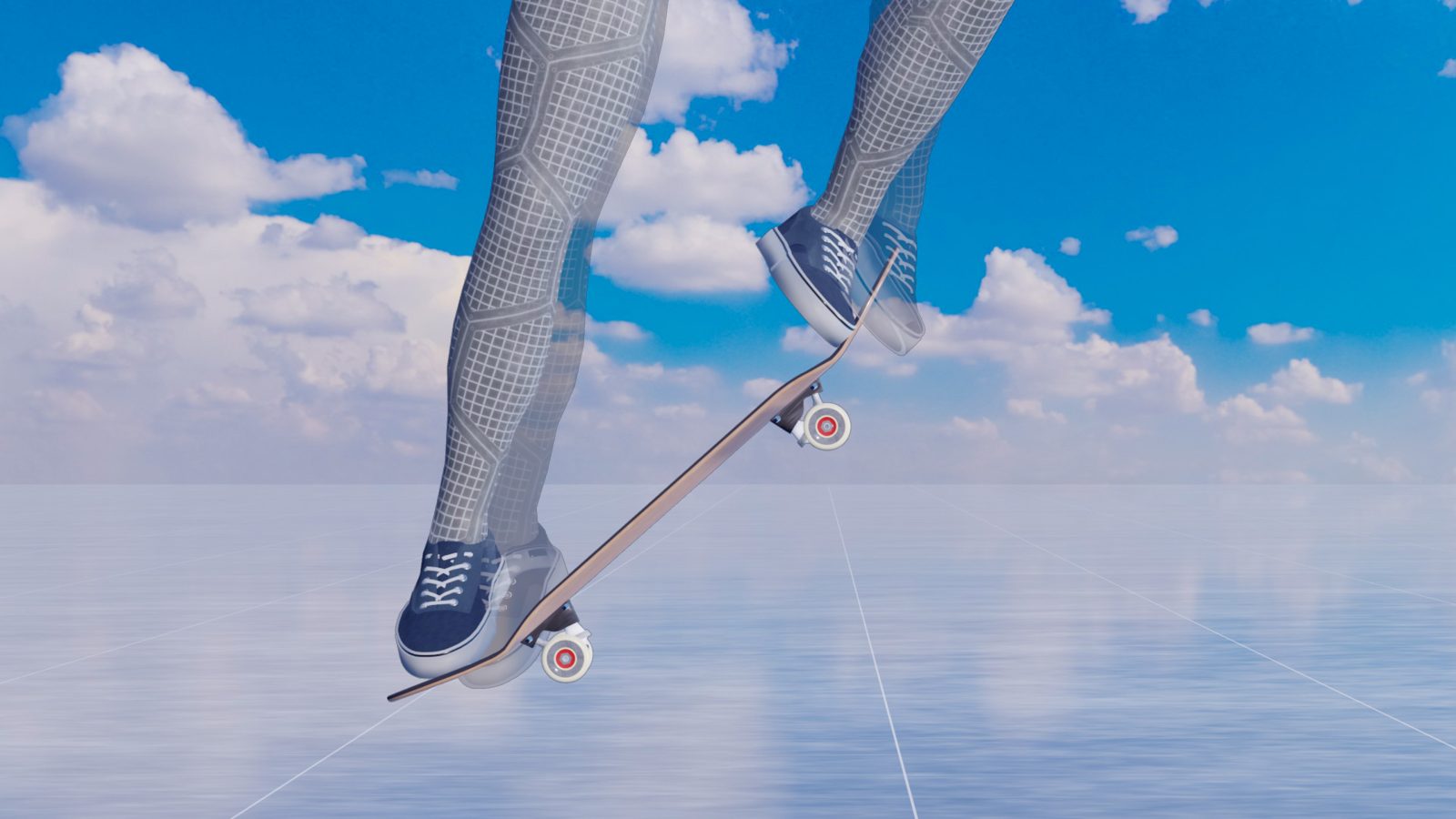
Structure of the human knee
A key to solving this problem is in the structure of the human knee. It naturally bends forward and backward, but not sideways. If you apply force to your leg when your toe is facing forward, the force lifts your lower leg around the knee. But if your toe is facing sideways, as the knee doesn't bend that way, the force raises your whole leg around the hip joint.
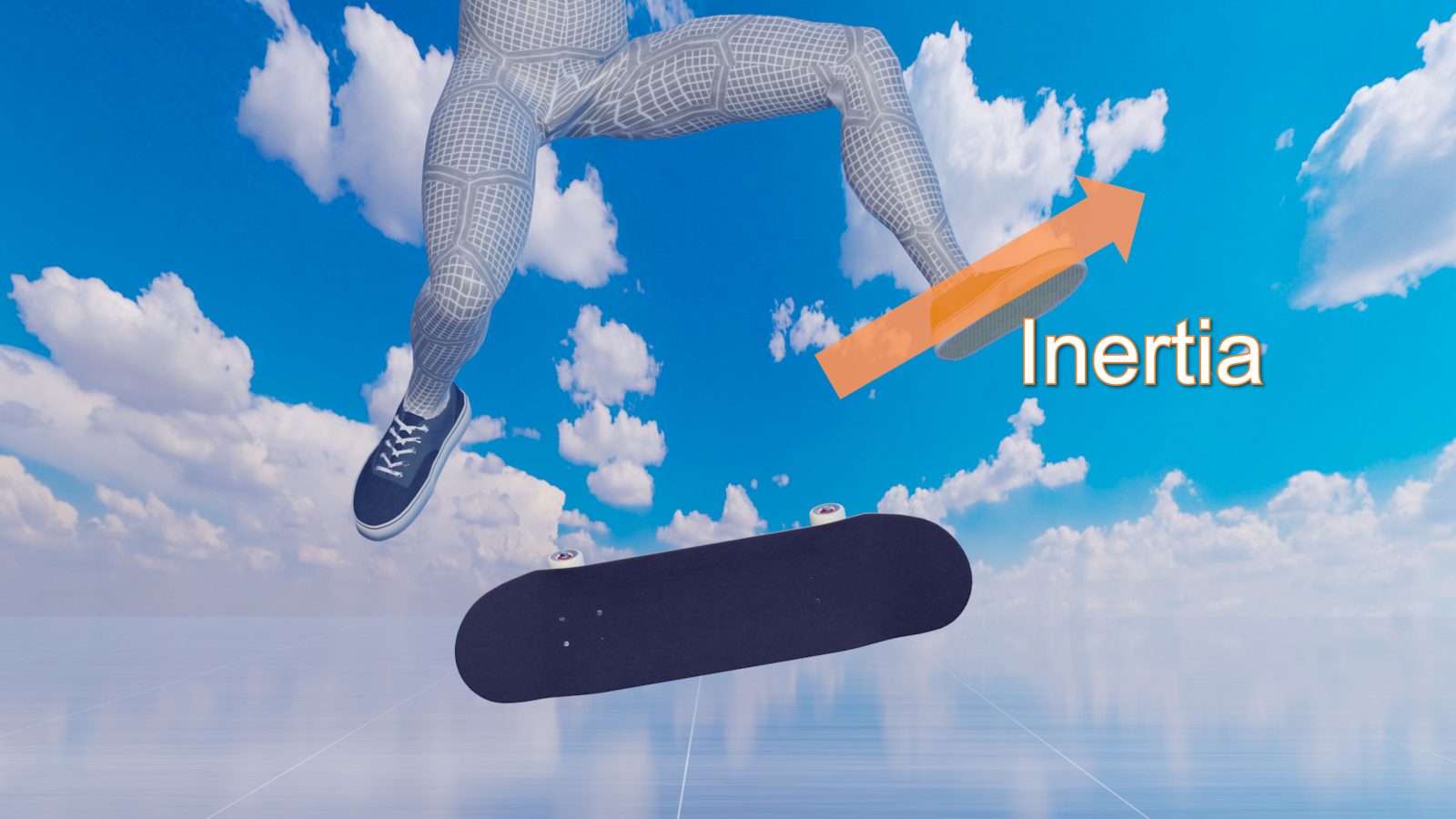
Twist your front foot inward
You can see how much lower you can keep your front foot by directing your toe sideways. Take advantage of this characteristic and either put your front foot perpendicular to your board or, if it's hard, rotate your foot inward during the flick so that you can block the lower leg from going upward too much.
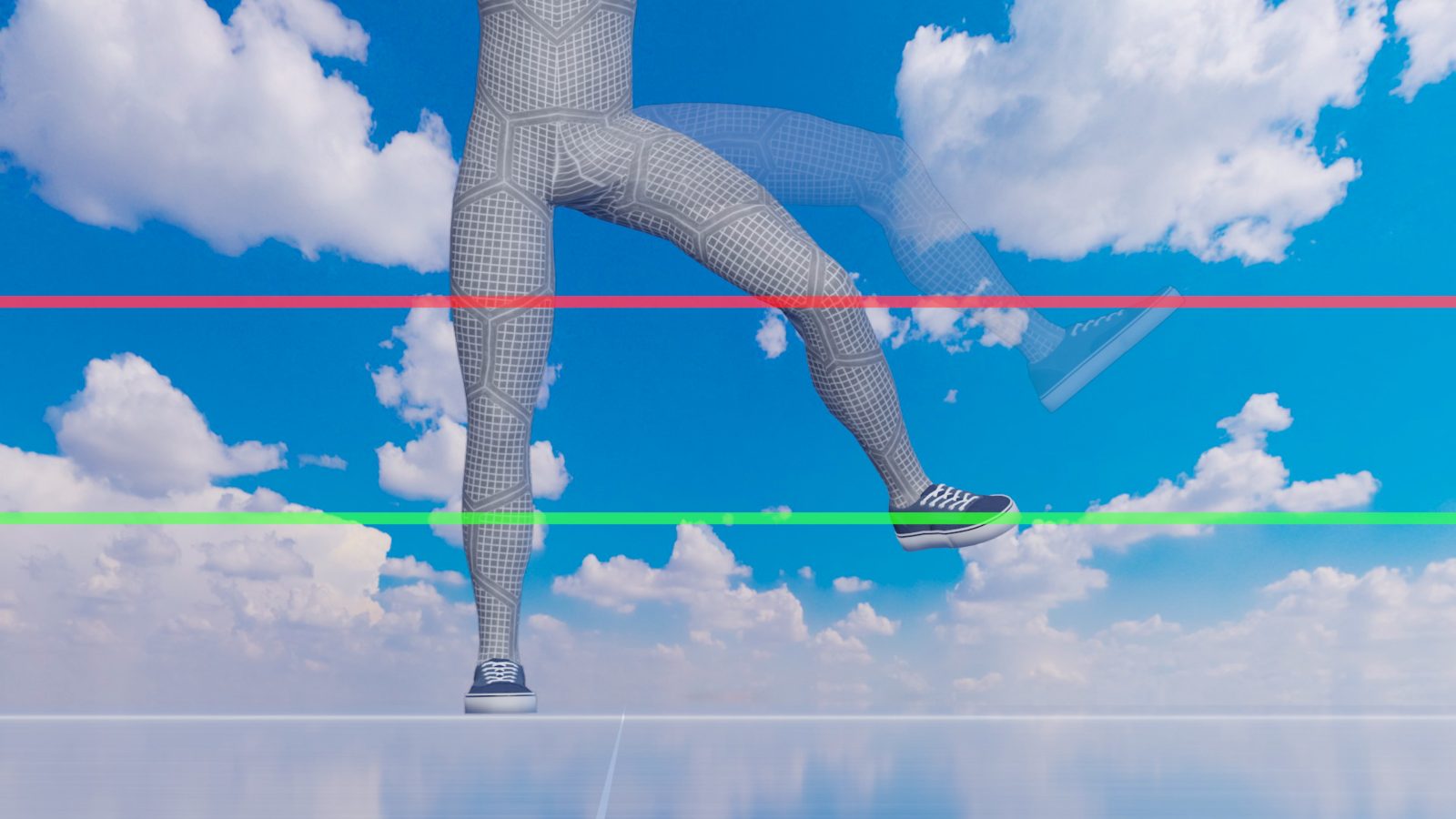
Some people can't put their feet parpendicular
Please take note here; some people should have their front feet open when crouching. If your ankles are stiff, your heels lift off the ground when squatting with your feet parallel. Your feet naturally open in an attempt to lower your heels, which is essential to maintaining balance. As a result of the toe pointing forward, the flick is more likely to cut through the air.
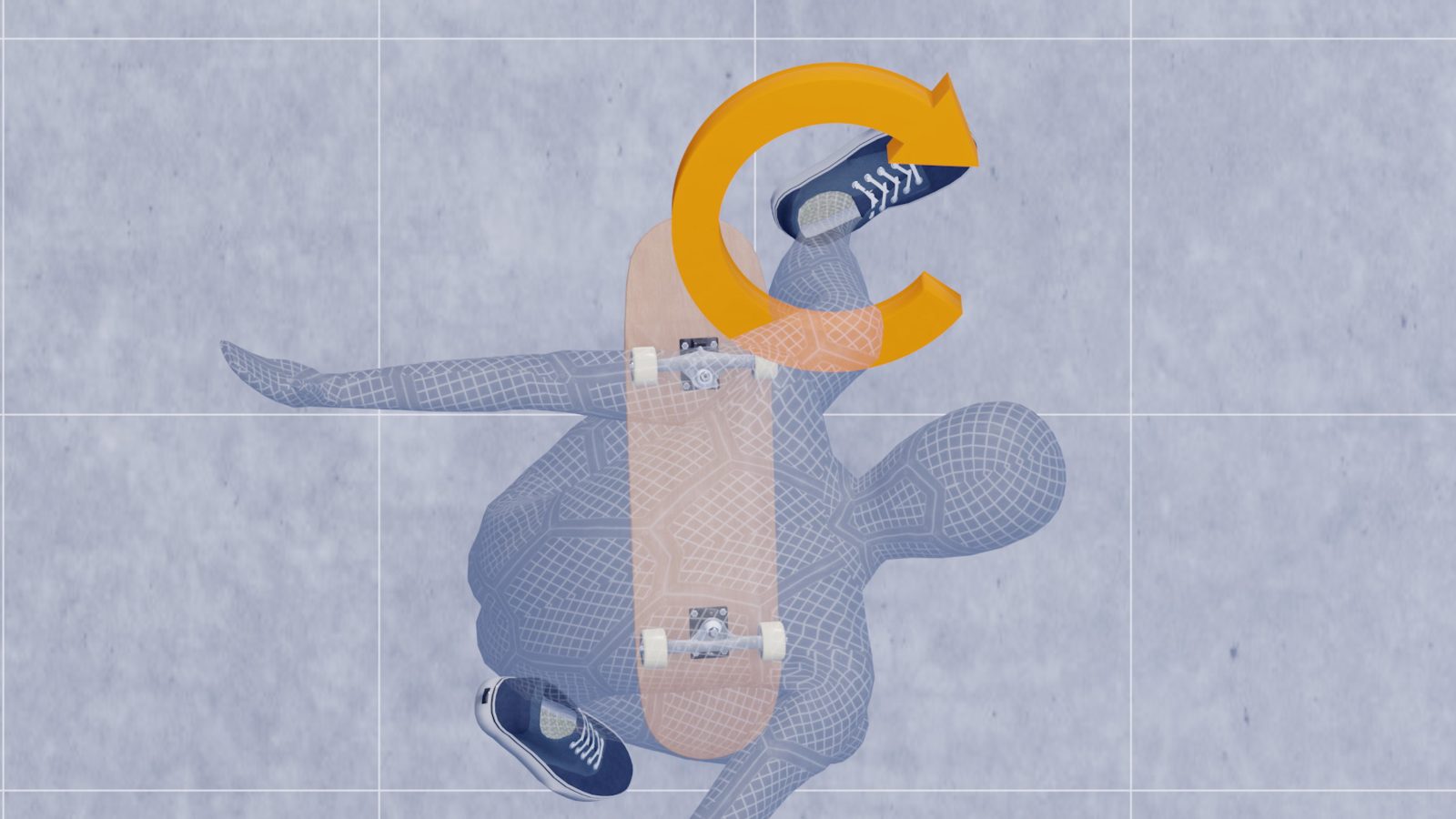
Put your feet where you feel comfortable
While placing your front foot perpendicular to the board is one way to solve this problem, it will compromise your balance if your ankles are stiff. Instead, place your feet at any angle you feel comfortable, crouch firmly, and twist your front foot inward DURING the flick.
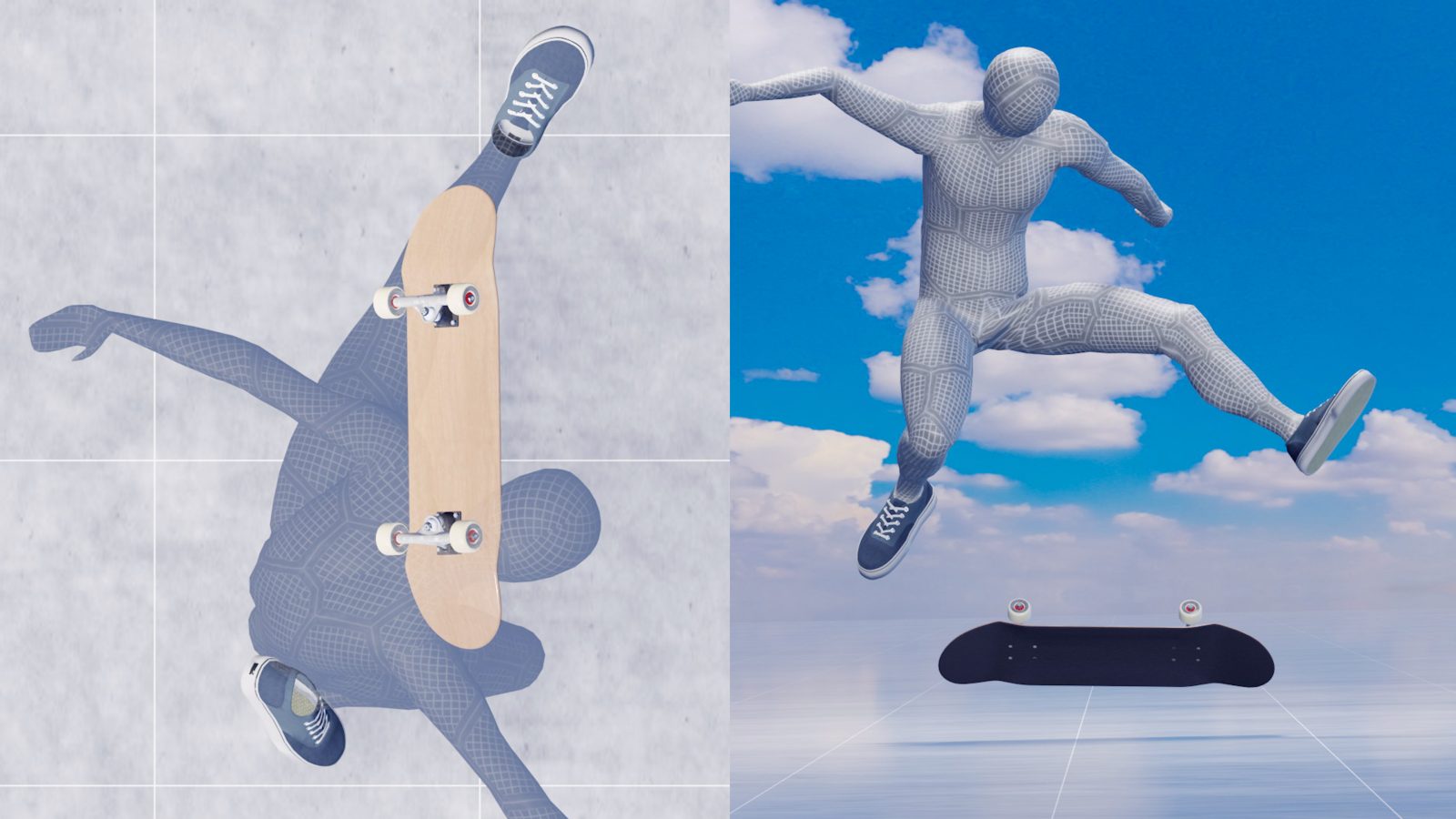
Motion Echo Player
I recommend using the Motion Echo Player to analyze your tricks. Upload a video and stop it at any position you want to analyze, and the system overlays the last five frames.
This system visualizes how you use your body in your tricks. I really hope this helps you land your tricks more easily.
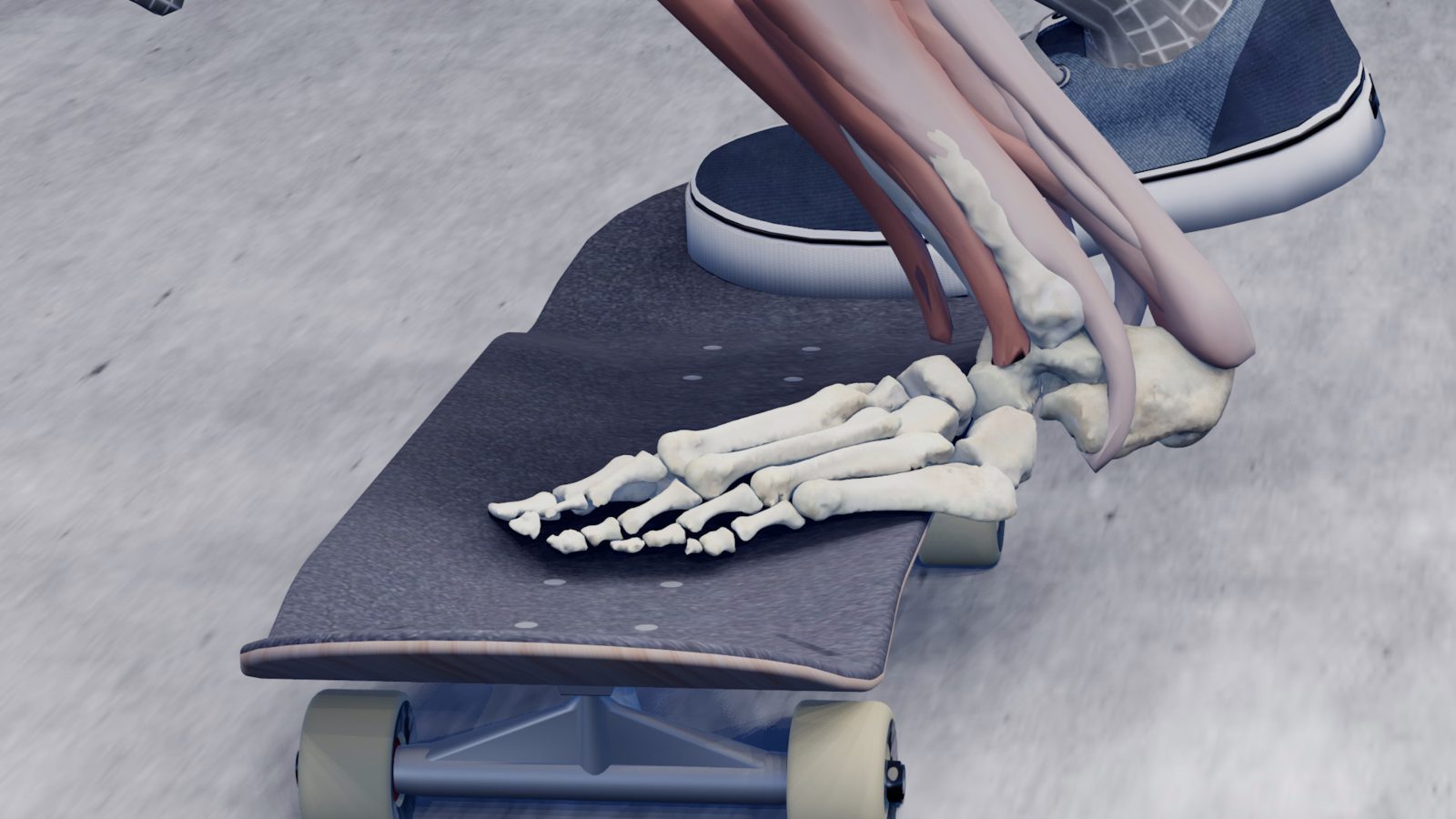

 Convert your video into 3D
Convert your video into 3D Facebook
Facebook Twitter
Twitter

